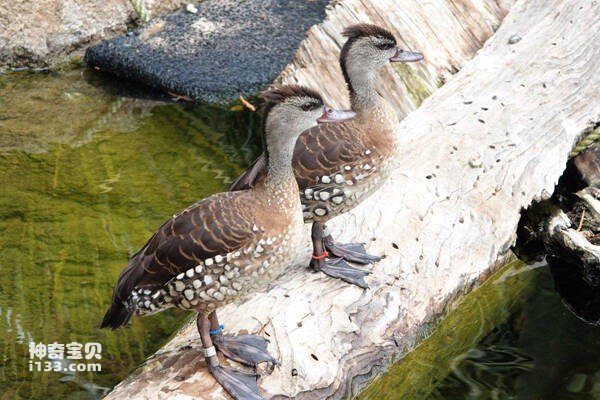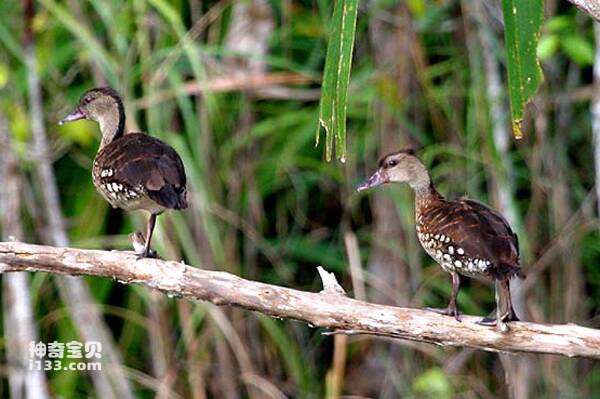Dendrocygna guttata
IUCN
LCBasic Information
Scientific classification
- name:Dendrocygna guttata
- Scientific Name:Dendrocygna guttata,Spotted Whistling-duck,Spotted Whistling Duck
- Outline:Waterfowl
- Family:
Vital signs
- length:43-50CM
- Weight:About 800g
- lifetime:No textual research information is available
Feature
Both sexes are similar, forming the crown, nape, neck, ryegrass color around the eyes, and grayish white head, eyebrows, and throat
Distribution and Habitat
It is found in Australia, Indonesia, Papua New Guinea, Philippines
It usually lives in lakes and swampy grasslands, but also occurs in swamps and surrounding plant-covered ponds and streams. They gather in small groups until evening, when they reach the dead branches on top of the trees where hundreds of large groups reside together.
Appearance
It is 43-50 cm long, has a wingspan of 80-90 cm and weighs 800 grams. The sexes are similar, forming the crown, back of the neck, neck of the duck, around the eyes are ryegrass color; The head, eyebrows and throat are grayish white. The chest and sides are reddish-brown with white spots and black edges around the spots. These fine spots gradually increase in size, becoming larger and more visible on the back half of the duck body, and white on the central part of the abdomen and anus. Dark brown on top and tail of the wings. The back and back are light brown, the center of the feather is black, and the edge of the feather is red. The duck's beak is a mixture of black and red.
Tarsal scale peltate; The male trachea had asymmetrical bulges. The two cry different, usually different clothing and behavior; Short duration of spousal relationship and family life; Moult twice a year; The male body often changes "etched feathers" and bright wedding feathers once each; The feat
Details
Dendrocygna guttata (Dendrocygna guttata) Spotted whistling-duck, Spotted Whistling Duck, no subspecies.

The fine spotted duck can feed both on the surface and under the water, and sometimes on the ground near the water to forage for grass. The food is mainly plant food such as rice, crop seedlings, grasses and aquatic plants, but also animal food such as insects, snails, mollusks, frogs and small fish. Tree ducks usually fly in groups of a few to a few dozen at dusk to feed in nearby rice paddies and return to their daytime waters before dawn.
The body of the fine spotted tree duck is upright when it stops, and a few of them often look around from time to time, and take off first when people or enemies are near, followed by other trees and ducks, and are extremely alert. Often in groups of a few to dozens of activities and foraging, there are many to hundreds of large groups. It is weak in flight and not as fast as other ducks. Also good at swimming and diving, and diving ability is very strong, a dive up to ten minutes. During the hot day, they often sleep and rest in the reeds or other tall water weeds. When food is abundant and undisturbed, they often inhabit fixed places and generally do not change their habitat or even migrate long distances.

The breeding season of the fine spotted duck extends from September to March of the following year, with the peak in September during the rainy season. Nest in a hole in a tree. Courtship and mating take place in the water. Before mating, the male and female ducks swim together. The male ducks continuously dip his beak towards the female, and the female ducks maintain an upright position. The nest is composed of grass leaves and stems, and each clutch lays 8-14 eggs, up to 16 eggs, and the eggs are white. The eggs are incubated by both sexes for 28-31 days.
Listed on the International Union for Conservation of Nature (IUCN) 2012 Red List of Threatened Species ver 3.1 - Not Threatened (LC).
Protect wild animals and eliminate wild meat.
Maintaining ecological balance is everyone's responsibility!








